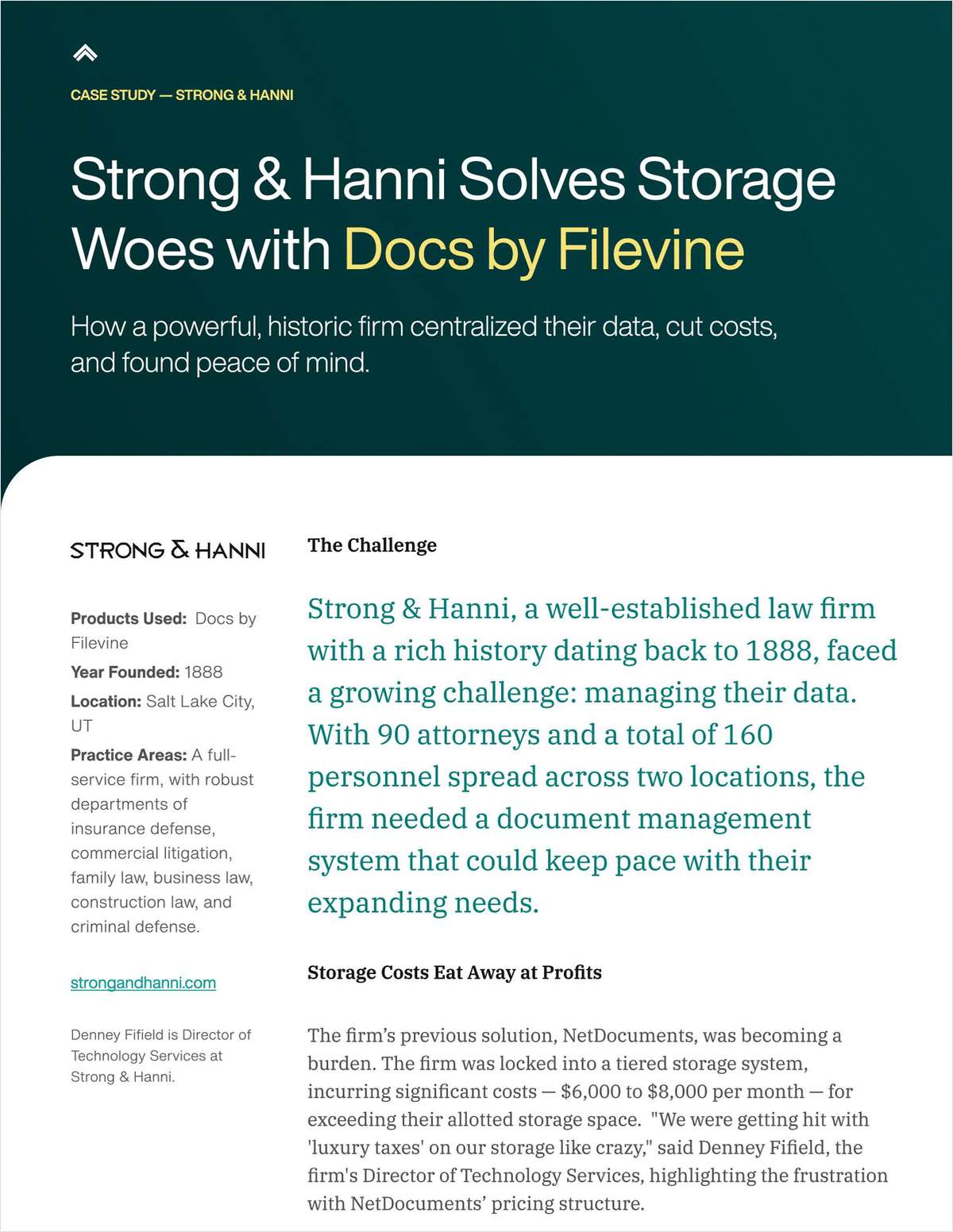 TRACE Bribery Risk Matrix (Courtesy photo)
TRACE Bribery Risk Matrix (Courtesy photo)New TRACE Study: Europe Is Least Risky Continent for Bribe Demands
The 2018 TRACE Bribery Risk Matrix, released Thursday, names the least and most risky of 200 countries evaluated as well as the least and most risky continents. The study's methodology changed this year.
December 06, 2018 at 05:44 PM
4 minute read
The original version of this story was published on Corporate Counsel
The top five least risky countries in which to do business and avoid bribe demands are New Zealand, Sweden, Norway, Denmark, and Finland, according to the latest research from TRACE International.
The 2018 TRACE Bribery Risk Matrix, released Thursday, also names the most risky of the 200 countries evaluated: Somalia, Libya, Venezuela, Chad and Turkmenistan.
The least risky continent was Europe, with Africa being the most risky. TRACE is an international anti-bribery organization that provides risk management solutions to almost 400 multinational companies.
The United States ranked as No. 18, or low risk, but the U.K., Germany, Canada and Australia, among others, scored better.
In last year's matrix, the U.S. ranked at No. 17. But Alexandra Wrage, president and founder of TRACE, told Corporate Counsel that changes to the methodology this year made comparisons invalid.
“Before we were tweaking [data] around the edges,” Wrage said. “This year we put together a working group, a team of experts from around the world, who worked six months examining our assumptions on the likelihood of a bribe demand.”
The findings led TRACE to change some of the four categories and nine subcategories—TRACE calls them domains and subdomains—used to calculate the points given to countries. The four domains are opportunity, deterrence, transparency and oversight.
One key change involved adding a subdomain to deterrence, called “dissuasion.”
For example, previously the matrix team “weighted heavily whether or not a country had a serious anti-bribery law on the books,” Wrage said.
“We found that's not really meaningful,” Wrage added. “It's not what's on the books, but what is being enforced that matters. A country no longer gets points for having a rigorous law if it's just sitting there collecting dust.”
But a country can earn points for “dissuading” people from engaging in bribery. Wrage said one example is Hong Kong, an island community where the anti-bribery organization is well known “and feared by most citizens.”
She said the high level of oversight meant there was a more credible risk of misconduct being caught. Thus citizens were dissuaded from wrongdoing.
The deterrence category also includes losing points for lack of dissuasion, or what Wrage called having a culture of “corruption malaise.” That occurs, she said, in communities where people believe that “everyone does it [pays bribes].”
In another change, TRACE added e-government to the points list.
Wrage explained, “We found high levels of e-government correlates with high levels of transparency. If you are doing a government transaction entirely online, such as seeking a visa or a permit, then you never interact with a government official and there is no opportunity for a bribe demand.”
Another first-time subcategory involved adapting to an influx of immigrants. “If you are a country with a low level of corruption, you want to make sure that immigrants buy into your entire way of doing business, including low corruption,” Wrage said.
Merritt Smith, a quantitative researcher who worked on the matrix, cited Hong Kong as an example of an entity that quickly integrates immigrants and instills local values about anti-corruption.
Wrage said looking at what kind of government a country has is not part of the methodology. “There could be a horrible state run by a horrifying dictator, but if he decides to end corruption, he will have a lot of success. And if you are just measuring the likelihood of bribes, then you have to keep an open mind and be objective.”
To create the matrix the research team aggregates data obtained from leading public-interest and international organizations, including the United Nations, the World Bank and the World Economic Forum.
It then analyzes the information, and assigns each country an overall score between 1 and 100—with 100 representing the greatest risk—and also scores for each of the four domains and nine subdomains.
Wrage said the detailed information can help companies, their general counsel and chief compliance officers tailor their compliance and due diligence practices to the specific risks presented in each country and better allocate limited compliance resources.
This year TRACE launched an online data browser to help users sort the scoring data and identify patterns that may offer a better understanding of the risk each country presents to a particular company.
|This content has been archived. It is available through our partners, LexisNexis® and Bloomberg Law.
To view this content, please continue to their sites.
Not a Lexis Subscriber?
Subscribe Now
Not a Bloomberg Law Subscriber?
Subscribe Now
NOT FOR REPRINT
© 2024 ALM Global, LLC, All Rights Reserved. Request academic re-use from www.copyright.com. All other uses, submit a request to [email protected]. For more information visit Asset & Logo Licensing.
You Might Like
View All
US Judge Rejects Morgan Stanley Reconsideration Bid in Deferred Compensation Litigation

Transgender Woman Awarded $150K Default Judgment Against Corrections Officer for Alleged Assault

Legal Speak: A Convicted Felon is Coming to the White House. What Happens Now?
1 minute read
AT&T General Counsel Joins ADM Board as Company Reels From Accounting Scandal
Trending Stories
- 1Infant Formula Judge Sanctions Kirkland's Jim Hurst: 'Overtly Crossed the Lines'
- 2Trump's Return to the White House: The Legal Industry Reacts
- 3Election 2024: Nationwide Judicial Races and Ballot Measures to Watch
- 4Climate Disputes, International Arbitration, and State Court Limitations for Global Issues
- 5Judicial Face-Off: Navigating the Ethical and Efficient Use of AI in Legal Practice [CLE Pending]
- 6How Much Does the Frequency of Retirement Withdrawals Matter?
Who Got The Work
Michael G. Bongiorno, Andrew Scott Dulberg and Elizabeth E. Driscoll from Wilmer Cutler Pickering Hale and Dorr have stepped in to represent Symbotic Inc., an A.I.-enabled technology platform that focuses on increasing supply chain efficiency, and other defendants in a pending shareholder derivative lawsuit. The case, filed Oct. 2 in Massachusetts District Court by the Brown Law Firm on behalf of Stephen Austen, accuses certain officers and directors of misleading investors in regard to Symbotic's potential for margin growth by failing to disclose that the company was not equipped to timely deploy its systems or manage expenses through project delays. The case, assigned to U.S. District Judge Nathaniel M. Gorton, is 1:24-cv-12522, Austen v. Cohen et al.
Who Got The Work
Edmund Polubinski and Marie Killmond of Davis Polk & Wardwell have entered appearances for data platform software development company MongoDB and other defendants in a pending shareholder derivative lawsuit. The action, filed Oct. 7 in New York Southern District Court by the Brown Law Firm, accuses the company's directors and/or officers of falsely expressing confidence in the company’s restructuring of its sales incentive plan and downplaying the severity of decreases in its upfront commitments. The case is 1:24-cv-07594, Roy v. Ittycheria et al.
Who Got The Work
Amy O. Bruchs and Kurt F. Ellison of Michael Best & Friedrich have entered appearances for Epic Systems Corp. in a pending employment discrimination lawsuit. The suit was filed Sept. 7 in Wisconsin Western District Court by Levine Eisberner LLC and Siri & Glimstad on behalf of a project manager who claims that he was wrongfully terminated after applying for a religious exemption to the defendant's COVID-19 vaccine mandate. The case, assigned to U.S. Magistrate Judge Anita Marie Boor, is 3:24-cv-00630, Secker, Nathan v. Epic Systems Corporation.
Who Got The Work
David X. Sullivan, Thomas J. Finn and Gregory A. Hall from McCarter & English have entered appearances for Sunrun Installation Services in a pending civil rights lawsuit. The complaint was filed Sept. 4 in Connecticut District Court by attorney Robert M. Berke on behalf of former employee George Edward Steins, who was arrested and charged with employing an unregistered home improvement salesperson. The complaint alleges that had Sunrun informed the Connecticut Department of Consumer Protection that the plaintiff's employment had ended in 2017 and that he no longer held Sunrun's home improvement contractor license, he would not have been hit with charges, which were dismissed in May 2024. The case, assigned to U.S. District Judge Jeffrey A. Meyer, is 3:24-cv-01423, Steins v. Sunrun, Inc. et al.
Who Got The Work
Greenberg Traurig shareholder Joshua L. Raskin has entered an appearance for boohoo.com UK Ltd. in a pending patent infringement lawsuit. The suit, filed Sept. 3 in Texas Eastern District Court by Rozier Hardt McDonough on behalf of Alto Dynamics, asserts five patents related to an online shopping platform. The case, assigned to U.S. District Judge Rodney Gilstrap, is 2:24-cv-00719, Alto Dynamics, LLC v. boohoo.com UK Limited.
Featured Firms
Law Offices of Gary Martin Hays & Associates, P.C.
(470) 294-1674
Law Offices of Mark E. Salomone
(857) 444-6468
Smith & Hassler
(713) 739-1250








